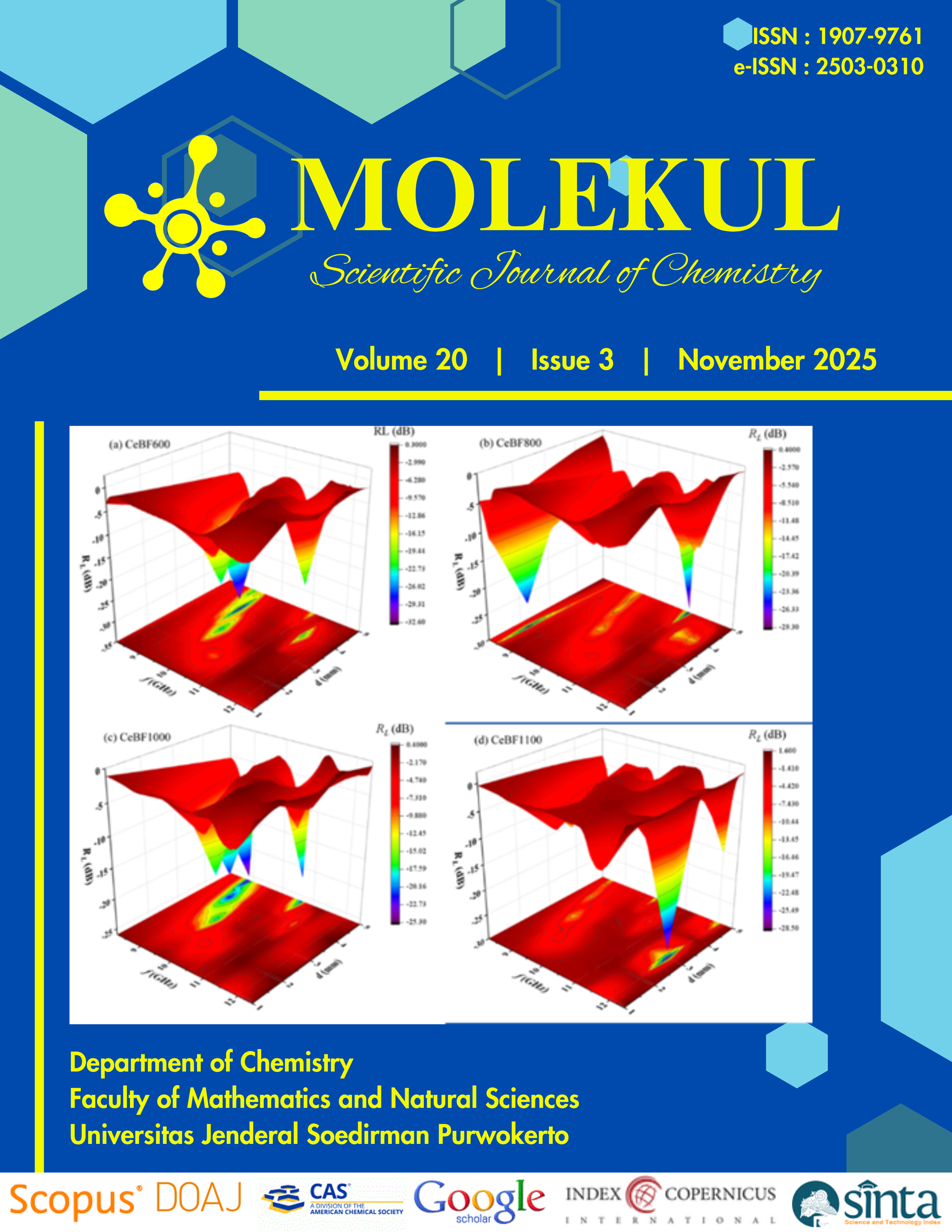DFT-Based Study of Phenolic-Derived From Nutmeg (Myristica fragrans): Promising Bioreductants for Green Synthesis Silver Nanoparticles
Abstract
ABSTRACT. The manufacture of silver nanoparticles (AgNPs) can be synthesized by reducing silver ions Ag+ to Ag0 by a reductant. Nutmeg (Myristica fragrans) fruit extract has the potential as a natural reductant (bioreductant) that can donate electrons to reduce Ag+ as a ligand and capping agent. This study aims to identify the potential of the bioactive compounds in Myristica fragrans (Mf) extract for the green synthesis of AgNPs using several parameters, including total energy, HOMO-LUMO, Fukui function, molecular electrostatic potential (MEP), global reactivity, and UV/Vis theoretical spectral analysis. The method used is Density Functional Theory (DFT) with Becke-3-parameter Lee-Yang-Parr (B3LYP) hybrid functionals, using the 6-31G (d,p) basis set for hydrogen (H), carbon (C), oxygen (O) atoms, and the LanL2Dz for the silver (Ag) atom. The results of the study indicate that single bioactive compounds eugenol, chalcone, carvacrol, and terpineol, as well as eugenol-Ag, chalcone-Ag, carvacrol-Ag, and terpineol-Ag complexes, are good reducing agents in the process of reducing Ag+ ions to Ag0 as AgNPs. In addition, these phen-Ag complexes show electron excitation at UV/Vis spectrophotometric simulation in the 454-473 nm wavelength range. This study provides a theoretical understanding of Ag+ reduction by bioactive compounds in Mf extract for green synthesis of AgNPs, thereby providing a scientific basis for developing green methods for eco-friendly, sustainable AgNP synthesis.
Keyword: Bioreductant, DFT, green synthesis, Myristica fragrans, silver nanoparticles.
.
Authors agree with the statements below:
- Authors automatically transfer the copyright to the MOLEKUL journal and grant the journal right of first publication with the work simultaneously licensed under a Creative Commons Attribution 4.0 International License (CC BY 4.0).
- Authors are able to enter into separate permission for the non-exclusive distribution of the journal's published version of the work (e.g., post it to an institutional repository or publish it in a book), with an acknowledgment of its initial publication in this journal.













